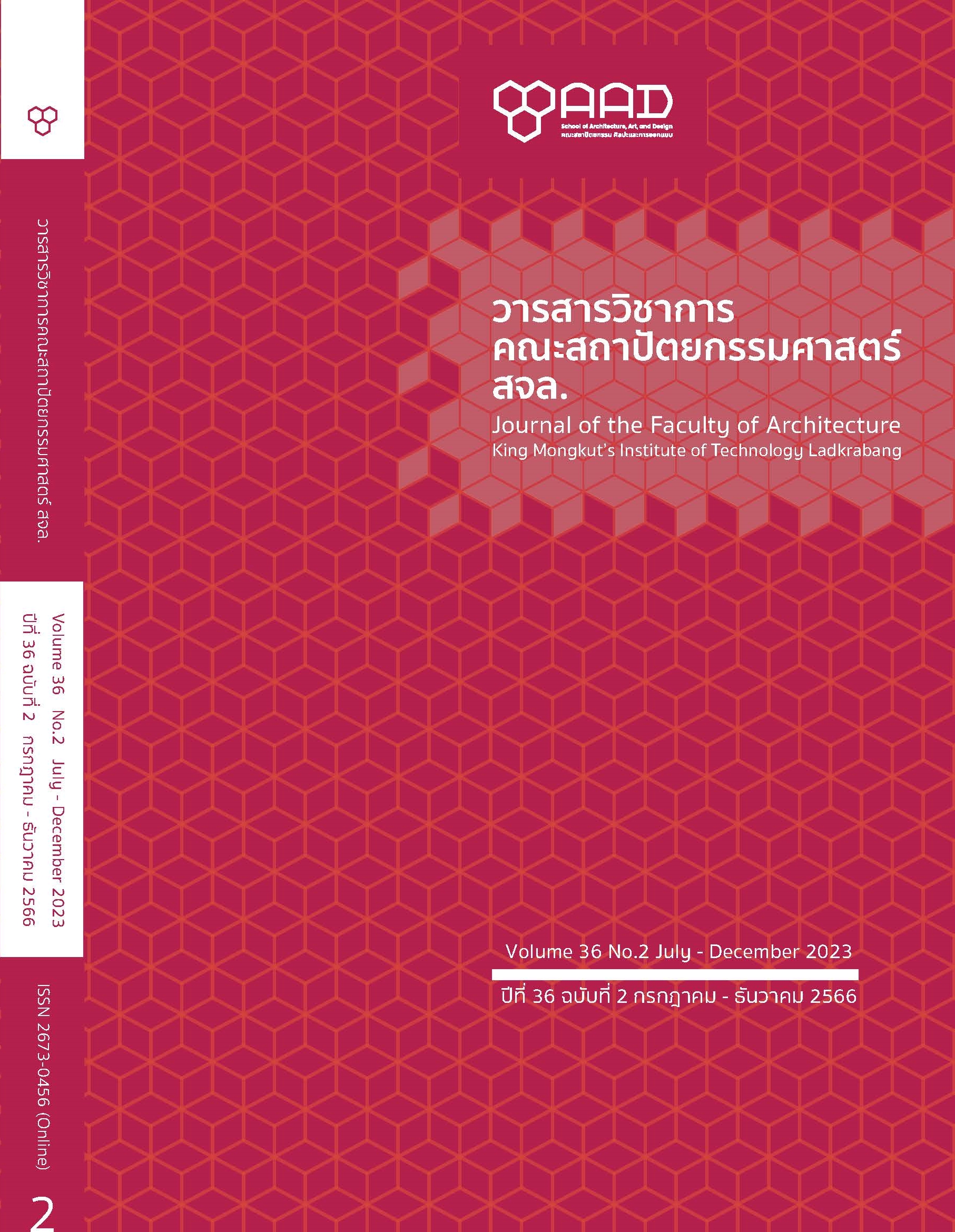Wood Fire Kiln, Dan Kwian: An Analysis of the Wisdom Heritage of How to Build a Wood Fire Kiln in the Mun River Basin.
Main Article Content
Abstract
Study on the wood fire Kiln, Dan Kwian: An Analysis of the Wisdom Heritage of How to Build a wood fire Kiln in the Mun River Basin The objectives of the study are as follows: 1) To study the characteristics of pottery kilns in the sample group of the Northeastern region and analyze the features that correlate with the Dan Kwian Kiln. 2) To explore the intangible cultural heritage in the process of constructing traditional Dan Kwian Kilns in the past and the development of contemporary Dan Kwian Kilns. And 3) To synthesize and identify tangible and intangible aspects of the cultural heritage that can be observed, as well as those that cannot be directly perceived, of both historical and developed Dan Kwian Kilns. The researcher utilized qualitative research methods, including interviews and on-site observations, to collect data. The collected information was then analyzed using relevant theories and concepts.
The findings of the study are as follows. 1) The physical characteristics of the pottery kilns in the sample group from the Northeastern region exhibited similarities in terms of operational systems. Additionally, certain features of these kilns were found to be in line with the Dan Kwian Kiln, specifically, the kilns situated in the Mun River Valley. 2) The intangible cultural heritage of the traditional Dan Kwian Kiln and the developed Dan Kwian Kiln resulted from the integration and application of knowledge and experiences from the past to meet the demands and suitability of contemporary lifestyles. And 3) The tangible and intangible aspects of the cultural heritage that can be observed in both historical and developed Dan Kwian Kilns encompass knowledge from interdisciplinary fields, such as structural engineering, design, material science, scale and proportion, landscape management, among others. However, there are certain intangible aspects of the cultural heritage that cannot be directly perceived, such as the kiln firing process, the system of hot air circulation within the kiln, and the language used in communication.
Article Details

This work is licensed under a Creative Commons Attribution-NonCommercial-NoDerivatives 4.0 International License.
This work is licensed under a Creative Commons Attribution-NonCommercial-ShareAlike 4.0 International License.
Copyright Transfer Statement
The copyright of this article is transferred to Journal of The Faculty of Architecture King Mongkut's Institute of Technology Ladkrabang with effect if and when the article is accepted for publication. The copyright transfer covers the exclusive right to reproduce and distribute the article, including reprints, translations, photographic reproductions, electronic form (offline, online) or any other reproductions of similar nature.
The author warrants that this contribution is original and that he/she has full power to make this grant. The author signs for and accepts responsibility for releasing this material on behalf of any and all co-authors.
References
Amornsakchai, T. (2017). Chemistry 1 (12th ed.). McGraw-Hill. (in Thai)
Gistda. (2017, June 1). Confluence of the Mun River and the Chee River. https://learn.gistda.or.th/2017/06/01/river-junction-of-mun-chi/
Gurteen, D. (1998). Knowledge creativity and innovation. Journal of Knowledge Management, 2(1), 5–13. https://doi.org/10.1108/13673279810800744
Hung, Y., Huang, S., Lin, Q., & Tsai, M. (2005). Critical factors in adopting a knowledge management system for the pharmaceutical industry. Industrial Management and Data Systems, 105(2), 164–183. https://doi.org/10.1108/02635570510583307
Katz, L. (1989). Dan kwian Village Pottery. https://louiskatz.net/th/DankwianIngroundKilns
Panich, V. (2003). Academy & Knowledge Management for Society. Pimdee. (in Thai)
Phoyen, K. (2022). Guidelines for Learning management to create innovation using concept of Practical. Journal of education Silpakorn university, 20(1), 11-30. (in Thai)
Songsiri, W. (1996, October 1). Basin Songkhram Pottery Kiln Group. https://lek-prapai.org/home/view.php?id=873. (in Thai)
Sternberg, R. J. (1999). The theory of successful intelligence. Review of General Psychology, 3(4), 292–316. https://doi.org/10.1037/1089-2680.3.4.292
Thaiall. (2023, January 20). Knowledge Management. https://www.thaiall.com/km/indexo.html. (in Thai)

